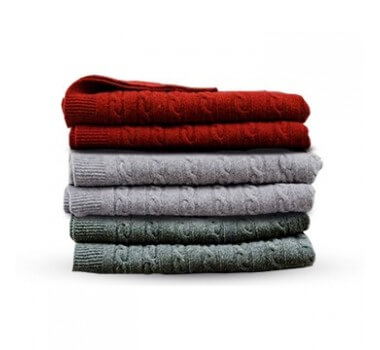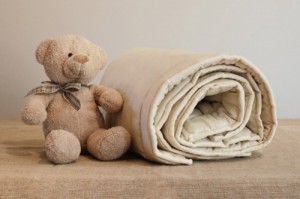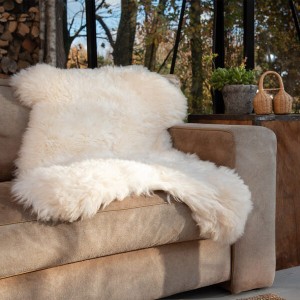. Wool can
- breathe, absorbing water vapour from the body and releasing it into the atmosphere
- dynamically respond to the environment and help regulate temperature
- clean itself (oh yes!)
- repel rain (think: sheep)
- keep you warm in winter and cool in summer.

Wool is a natural "high-performance" fabric - it's naturally good for your skin and body. Because of this, it's very helpful in keeping you and your family healthy, relaxed and rested!
Let's have a look at how it does all these things.
Wool consists of three layers.
- The first, keratin, is a moisture-loving protein that all animal hair has. It is designed to maintain a stable body temperature. Think how useful this is to babies, athletes and your own day-to-day living.
- The second layer is a scaly covering. The overlapping scales are tiny, but as they rub against each other they push off the dirt. So it is self-cleaning, as anyone who's put their baby in wool knows.
- The third layer is a filmy skin which keeps the rain out. Wool is quite water-resistant, as duffel-coat wearers and sheep can testify.

So, you can see already that it's pretty amazing, and a healthy thing to have next to your skin.
Now, the two outer layers have tiny pores which allow moisture to pass through to the keratin core, which absorbs it. So, if the temperature increases or the wearer becomes more active and begins to sweat, the moisture is wicked into the central core. Your body heat then wicks it out towards the surface, where it is released into the atmosphere.
In this way, it helps you and your baby maintain a stable temperature and keeps you and your baby dry and comfortable by absorbing and releasing sweat. It even does this "dynamically", which means it does it more when needed, and less when not needed. Wow. It's just the best thing, don't you think? No man-made fibre can equal this.
To keep these abilities, wool does need to be looked after. But with 99% of washing machines now having a wool cycle, this is quite easy. Just use a liquid detergent for wool, or a drop of your own shampoo, and set the temperature on your wool cycle to 30C.

More wool facts
- Wool is naturally antibacterial. This is due to its lanolin (wool fat) content - as wool becomes moist, some of the lanolin converts to lanolin-soap, which helps keep the fabric hygienically clean! Combining this with it's self-cleaning properties, you can begin to understand why wool underwear doesn't get smelly. It smells fresh for ages.
- Wool can absorb around 33% of its own weight without feeling wet. This is heaps more than man-made fibres, which typically absorb only 4% before feeling wet and uncomfortable. It's much more than cotton, too. It means that your baby is more likely to stay warm and dry if he/she dribbles or possets, and you can just give a quick rub down rather than having to change him/her so often. Making your baby happier, and your life easier.
- Wool is a great insulator. It is warm in winter and cool in summer (think vacuum flask). This is because of all the "waves" in the fibre, which lock in air. It may seem strange to us to use wool in the summer, but many Bedouins and Tuaregs use wool to keep the heat out! (They use camel and goat hair as well as sheep's wool.) This is why sheepskins are such a great choice for prams, strollers and carseats, keeping your baby comfortable and so making your life easier.
- Wool is "bouncy" - the springiness of the fibres gives it good elasticity - it stretches really well and goes back into shape well too. This means that it's very easy to put on your baby - and to take off of course too. Much less fiddling around with arms and things. Making your baby happier, and your life easier (did I say this before?).
- Wool fibres can be bent and twisted over 30,000 times without breaking. (That's just an interesting fact. I can't relate that to your baby...)
-
- Roman togas used to be made of wool. (ditto...)
- Finally, wool is a very safe fabric and fire-resistant. It's harder to ignite than most synthetic fibres and cotton. It has a low rate of flame spread, it doesn't melt, or drip, and if it does burn it creates a "char" which self-extinguishes.
No man-made fibre can yet duplicate all of the properties of natural wool. How did sheep do all that?

Post time: Apr-26-2021

